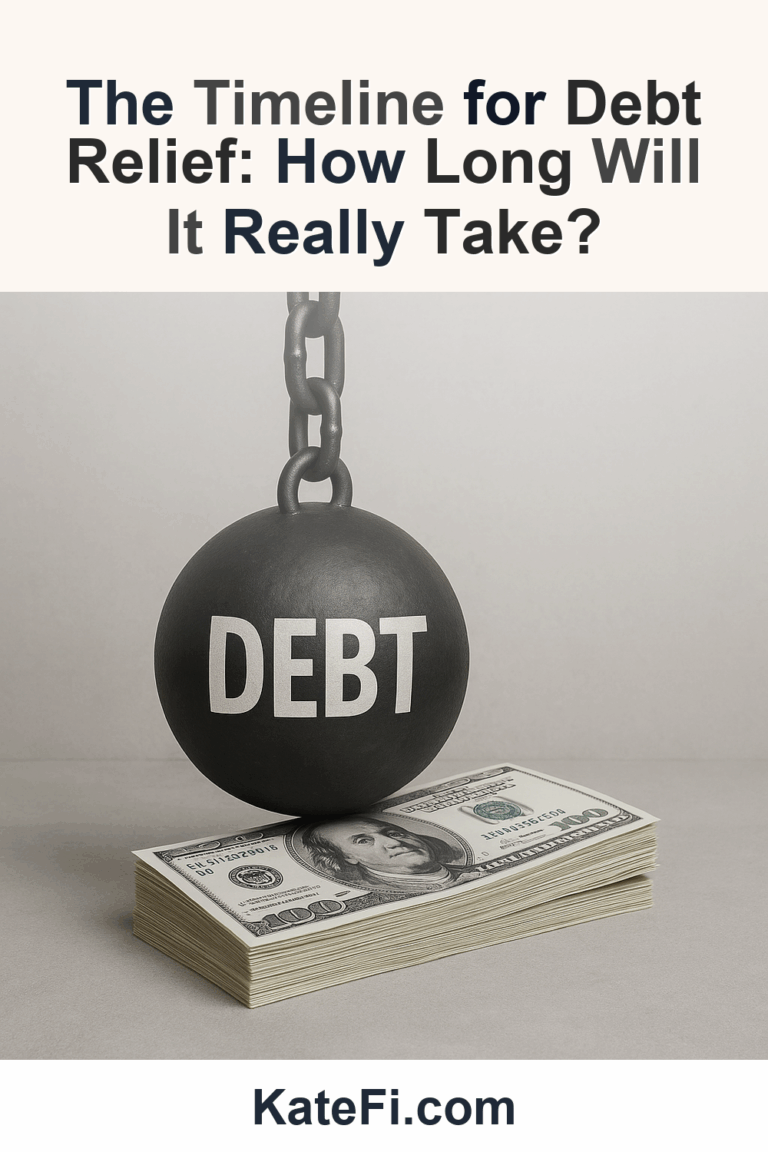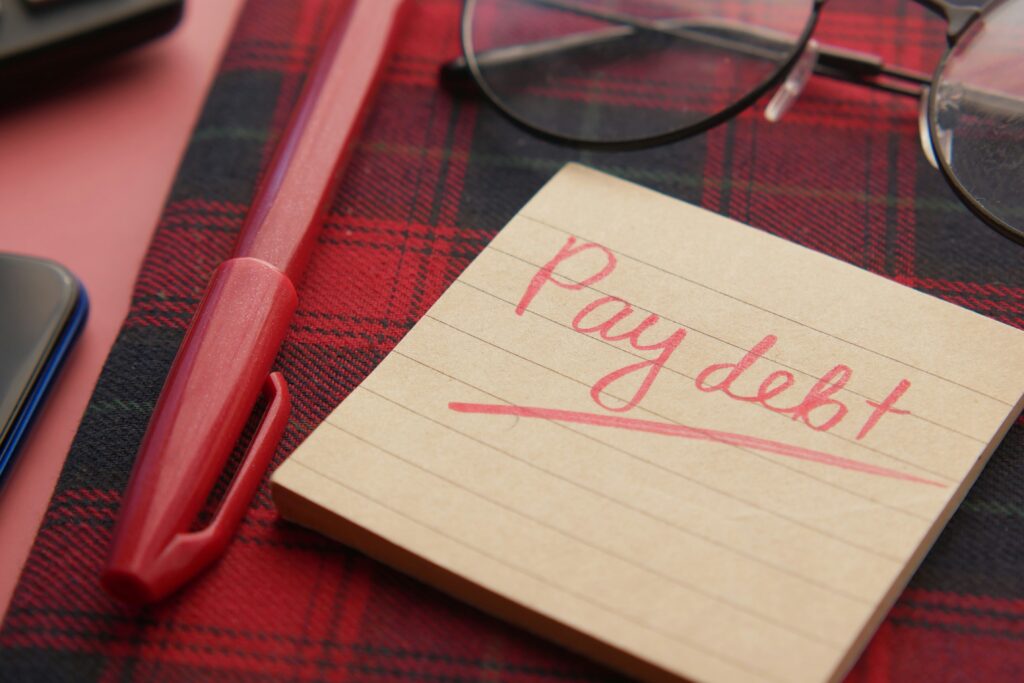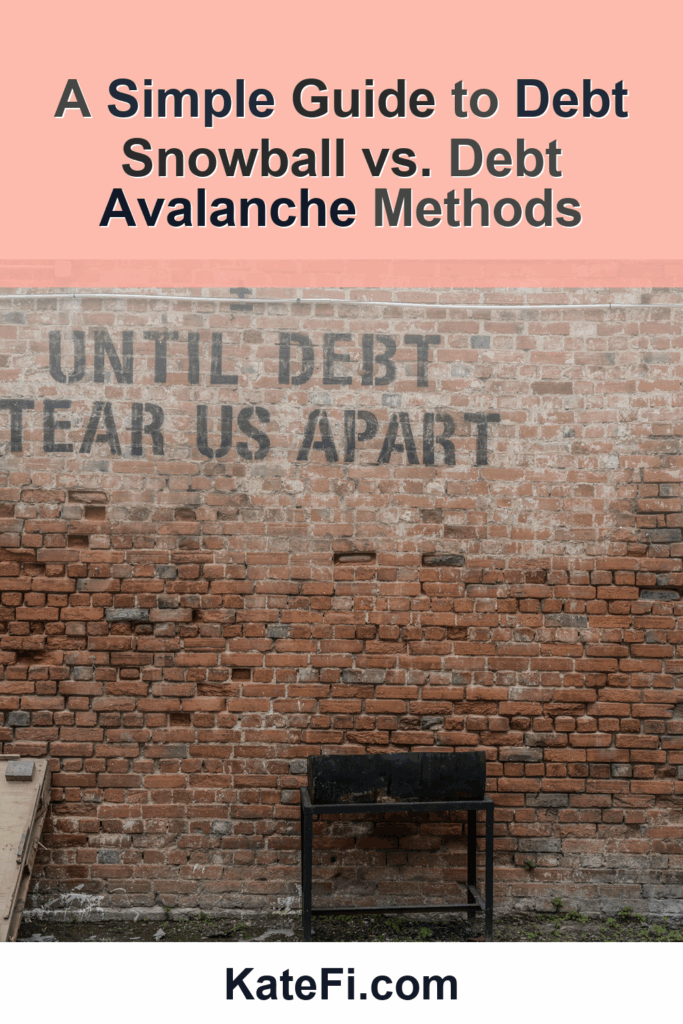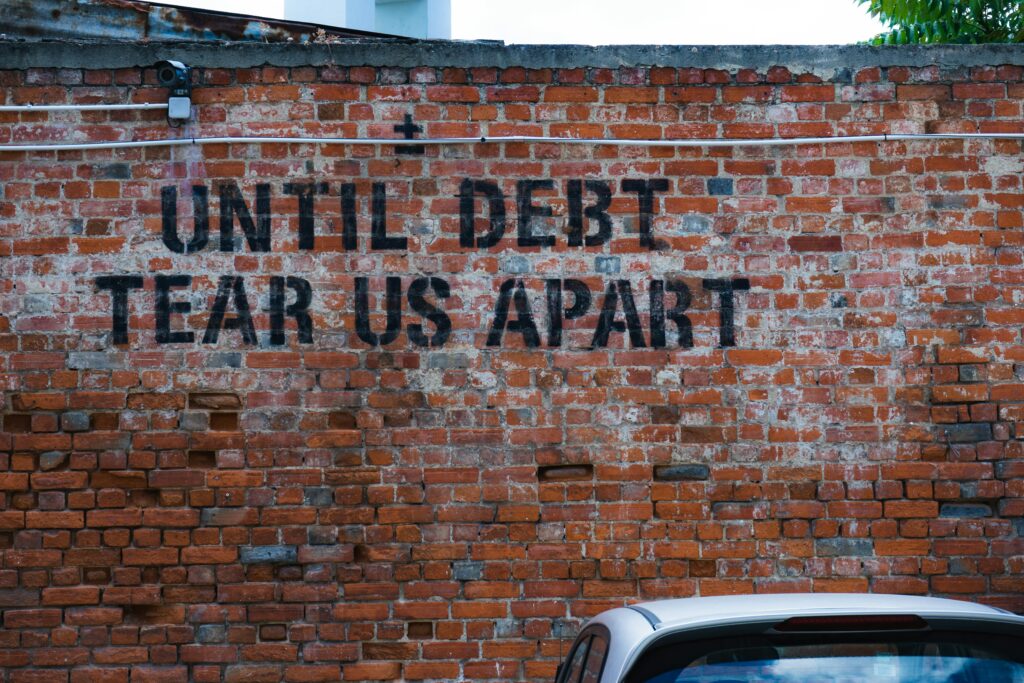The Timeline for Debt Relief: How Long Will It Really Take?
In today’s economic climate, understanding the timeline for debt relief is more crucial than ever. With rising inflation rates and increasing household debt, many Americans are searching for effective strategies to regain control of their finances. If you find yourself drowning in debt, you might be wondering: How long will it really take to find relief? The answer is nuanced, influenced by various factors including your debt type, total amount owed, and your financial habits.
Love our content? Show your support by following us — pretty please!🥺
FOLLOW ON PINTEREST
Hi! I’m Kate, the face behind KateFi.com—a blog all about making life easier and more affordable.
In this article, we’ll discuss the typical timelines for different types of debt relief solutions, practical budget resets that can help you maintain your progress, and how to gather essential documentation to streamline the process.
The Current State of Debt in America
What You’ll Learn on the Call
- Estimated timeline and monthly payment range
- How credit may be affected in the short term
- What documents to gather to move faster
Not available in IL, KS, OR, TN, UT, WV.
As of 2023, household debt has reached staggering levels, with Americans owing more than $16 trillion combined. This includes mortgages, student loans, auto loans, and credit card debt. Amid increasing inflation, which has led to higher prices for essential goods, many families find themselves struggling to make ends meet.
Understanding the broader economic landscape can help frame your journey to debt relief. If you’re one of the many who feels trapped by financial obligations, you’re not alone. The good news is that various options are available for those seeking a way out.
Types of Debt Relief Solutions
Before diving into timelines, it’s essential to understand the primary methods of debt relief. Each approach varies in terms of effectiveness and time commitment:
- Credit Counseling: A common first step, credit counseling helps you understand your financial situation and create a personalized budget plan. While this method does not directly reduce your debt, it can help you manage payments more effectively.
- Debt Settlement: This involves negotiating with creditors to settle your debt for less than what you owe. While it can be effective, it often requires several months of negotiation, and there’s no guarantee of a favorable outcome.
- Debt Management Plans (DMP): Often facilitated through credit counseling agencies, a DMP consolidates your payments into a single monthly payment, typically with lower interest rates. These plans generally take three to five years to complete.
- Bankruptcy: This is a last resort and can significantly impact your credit score. Depending on the type of bankruptcy filed, the process can take several months to years. It also requires extensive documentation and legal representation.
- Debt Consolidation Loans: By taking out a loan to pay off your existing debts, you can consolidate multiple payments into one. However, securing such a loan can depend on your creditworthiness and may take weeks or even months.
Here’s a quick comparison table illustrating the timelines of various debt relief methods:
| Debt Relief Method | Typical Duration | Impact on Credit |
|---|---|---|
| Credit Counseling | Immediate budgeting advice | Minimal |
| Debt Settlement | 6 months to 2 years | Significant |
| Debt Management Plans | 3 to 5 years | Moderate |
| Bankruptcy | 3 to 6 months (Chapter 7) | Severe |
| Debt Consolidation Loan | 1 to 3 months | Varies based on repayment |
How Long Will Debt Relief Really Take?
Lower Your Unsecured Debt
If you have $5,000+ in credit card or personal loan debt, a free consult can review options like settlement or hardship plans.
- One-on-one call to review your debts and goals
- See potential monthly payment reductions
- No obligation to enroll
Not available in IL, KS, OR, TN, UT, WV.
While the above methods offer general timelines, your individual situation will greatly influence the actual duration. Here’s what you can expect in more detail:
Credit Counseling
Credit counseling is one of the fastest routes to gain control over your budget. Typically, you can schedule an appointment within a week or two. The counselor will assess your financial health and help you create a sustainable budget. However, implementing the budget resets you develop can take time and discipline.
Debt Settlement
Debt settlement is a longer road. Most consumers can expect the process to last anywhere from 6 months to 2 years. Negotiating with creditors requires patience and persistence. You may also need to stop making payments during negotiations, which could negatively impact your credit score in the short term.
Debt Management Plans
For a DMP, you are typically looking at a commitment of 3 to 5 years. This plan can help alleviate stress, but it requires sticking to a budget and making regular payments, often through a third-party agency. The effectiveness of your plan depends heavily on your adherence to the budget.
Bankruptcy
Filing for bankruptcy can feel like a quick fix, but it comes with long-term implications. The bankruptcy process can take anywhere from 3 to 6 months for a Chapter 7 filing, but the negative effects on your credit can last for up to 10 years.
Debt Consolidation Loans
If you choose a debt consolidation loan, the application process can take a few weeks. However, if you have poor credit, securing such a loan may take longer or not be possible. Your new monthly payment will depend on the terms of the loan, which should ideally simplify your financial situation.
Strategies for Budget Resets That Stick
Understand pros/cons of settlement vs consolidation vs DMP for your exact mix of debts.
Not available in IL, KS, OR, TN, UT, WV.
After determining the best debt relief method for your situation, it’s crucial to implement strategies that will help you stick to your new budget. Here are practical steps you can take:
- Track Your Spending: Utilize budgeting apps or simple spreadsheets to monitor where your money goes each month. This will help you identify unnecessary expenses.
- Set Specific Goals: Establish clear, achievable goals for both short-term and long-term savings. Celebrate small wins to keep motivation high.
- Emergency Fund: Even while in debt, aim to build a small emergency fund. This can prevent you from going deeper into debt when unexpected expenses arise.
- Automate Payments: Set up automatic payments for your debts. This can prevent missed payments, which can lead to additional fees and negatively impact your credit score.
- Periodic Reviews: Schedule monthly reviews of your budget to assess progress and make necessary adjustments. Life changes frequently, and your budget should reflect that.
✅ See If You Qualify for Debt Relief
Gathering Necessary Documentation for a Faster Review
When seeking debt relief, certain documents can expedite your evaluation. Here’s a checklist of what to prepare:
- Income Verification: Recent pay stubs or tax returns.
- Debt Statements: Current statements from all creditors, showing amounts owed and interest rates.
- Monthly Expenses: A comprehensive list of your monthly expenditures, including utilities, groceries, and discretionary spending.
- Credit Reports: Obtain a copy of your credit report to understand your current financial standing.
Having these documents ready can speed up the review process, helping you receive the best possible debt relief options.
Understanding the Credit Impact
It’s important to recognize that any form of debt relief can affect your credit score. For instance, settling a debt may lead to a lower score initially, but it can also reflect a responsible resolution of your financial situation. On the other hand, filing for bankruptcy has a much more severe and long-lasting impact. It’s essential to weigh these consequences against the relief you seek.
While no one solution is perfect, making informed choices based on your unique financial circumstances can lead to more favorable outcomes in the long run.
✅ See If You Qualify for Debt Relief
Important: This content is for education only—not legal, tax, or financial advice. Results and eligible programs vary by situation and state. Fees apply if you enroll and complete a program. Debt relief can affect credit; missed payments may lead to collections/lawsuits. Not available in IL, KS, OR, TN, UT, WV.
In conclusion, while the timeline for debt relief varies greatly based on individual circumstances and the method you choose, there are actionable steps you can take to enhance your financial health. With effective budgeting resets and a solid plan in place, you can regain control of your finances and work toward a debt-free future. If you’re ready to explore your options further, don’t hesitate to get a free consultation today. The journey to financial freedom starts with taking the first step!






















